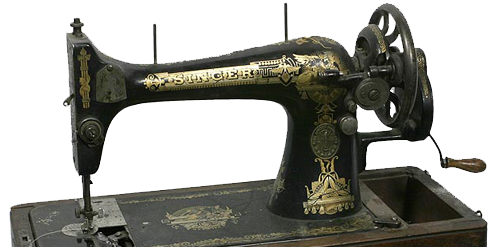What do we know of human needs? Virtually everything! And this is why one can bravely affirm that clothes are one of those needs. It is an aesthetic and thermal, hygienic and protective need. Satisfaction of all of these human needs is first of all determined by the functionality of the fabric used for the clothes production.
Once weaving was one of the hardest occupations. Differentiation of labour and professional growth of every separate weaver allowed to create new textiles in bigger volumes. Every land, city, village had its own masters, inventors and producers of threads and linens, the unique features of which was usually the top secret data. Such know-how was protected at the cost of one’s life. With the science development and globalization in it new textiles became current, although these fabrics and their fibers couldn’t be used for making clothes. But glass and light fibers are not our type and not our cup of tea. Lattex D works with different textiles in order to give comfort, warmth, coziness and protection to the customers and clients, who are getting greater in quantity day after day. The new production line is planned to satisfy the growing demand. Thus the active search for the new textiles, materials, fittings is on agenda. Lattex D accumulates the number of the long-term suppliers, but doesn’t stop the marketing research and seeking for the new partners.
In general, fabric is a particular case of a textile product, created on the loom through perpendicular weave of two thread systems. Textile is also referred to knitted garments and molded fabrics, that are received in different methods, from fulling to electric flocking.
There are estimated hundreds of the textile types, and each of us can easily remember not less than ten of them – satin, velvet, coarse calico, printed cotton, denim, jersey, crepe, mohair, linen cloth, silk, organza, tweed, flannel…
The types of raw materials for the textile can be natural, artificial and synthetic. The closer to the body surface, the more natural fibres should be present in the textile.
The colouration of fabrics subdivides them into one-coloured and multi-coloured.
The surface of the fabric can be smooth (cloth), fleecy (thick flannelette), double-side thick flannelette and velour (fleece of one length).
Among the wide assortment of textile uses you can easily identify the following aims – linens, trousers cloth, blouse cloth, suit cloth, coat cloth, and the others.
The weave (texture) of the threads in the fabric, or to be more exact its method, allow us to classify the textiles into those possessing smooth weave, simple weave, special weave, compound, jacquard, double layer texture, fleecy texture, etc.
Coming back to the type of the raw materials, we need to note that natural fibers like flax, silk, cotton, fleece are the most hygienic under the conditions of correct usage, while synthetic and artificial fabrics are more wear-resistant and get less wrinkled. In general any artificially created fabric possess several special features – water-resistance, absence of obligatory iron-pressing, possibility of repeated use, hygroscopicity, electrifying state, etc.
What is good and what is bad in the problem of choosing textile for the clothes sewing? There is a definite answer in every exact situation – country, culture, climate, material means of the customer and executor, fashion traditions and personal preferences. When ordering the clothes sewing, the wish of the client and the experience of the sewing masters merge into conglomerate that gives birth to unique work of art or household. There is only one little thing left – to wish!
sewing factory in Latvia

High quality and reasonable prices. Thanks to the modern equipment and highly qualified personnel our company can cope with an order of any volume and level of complexity in undertime.
Deed follows words, and result follows the deed!





